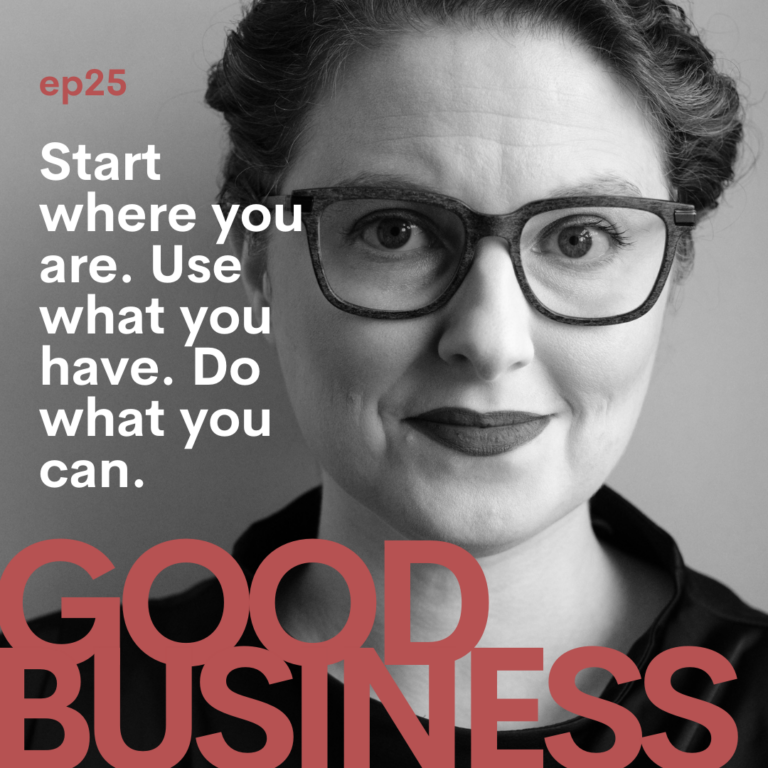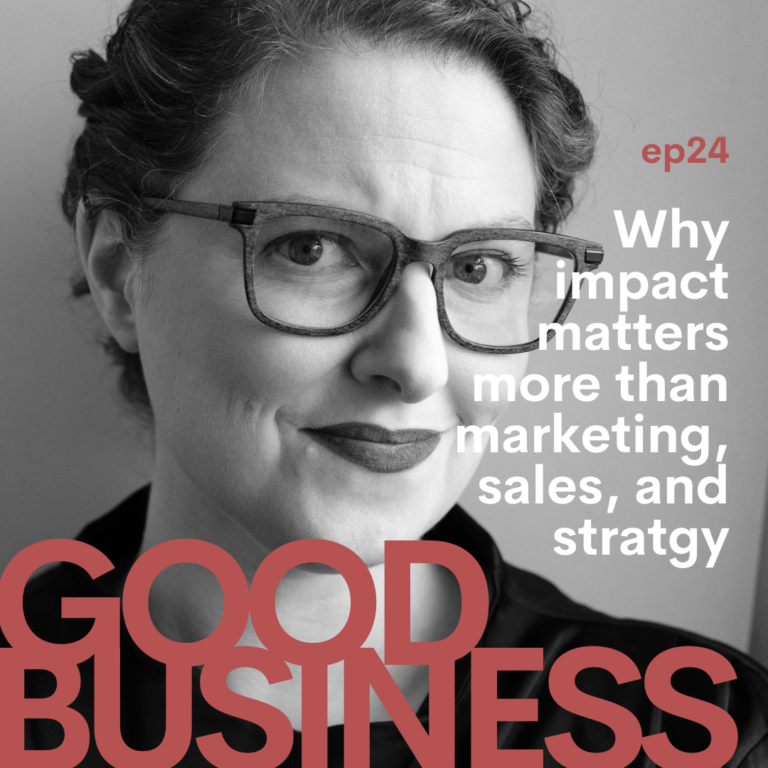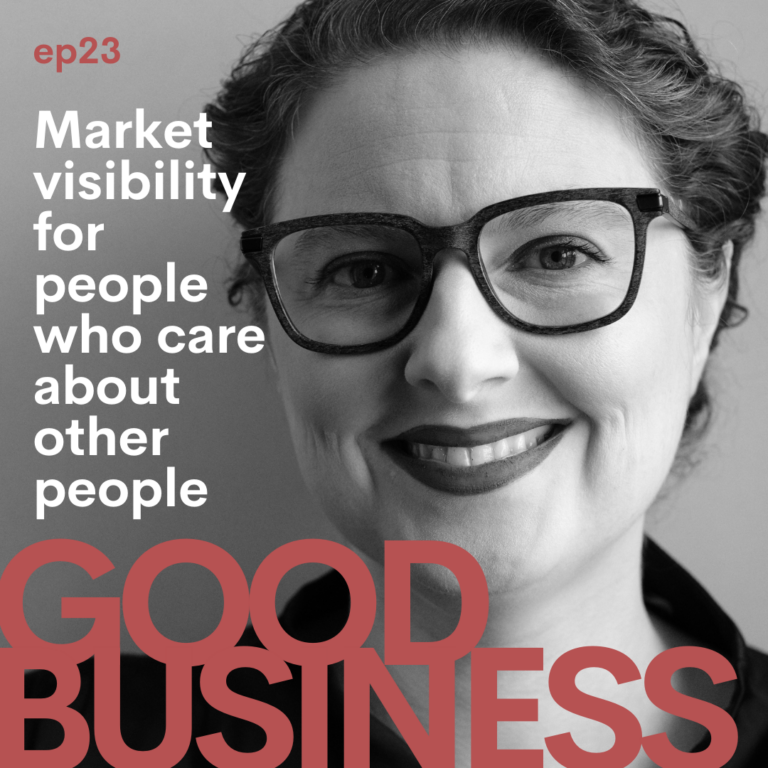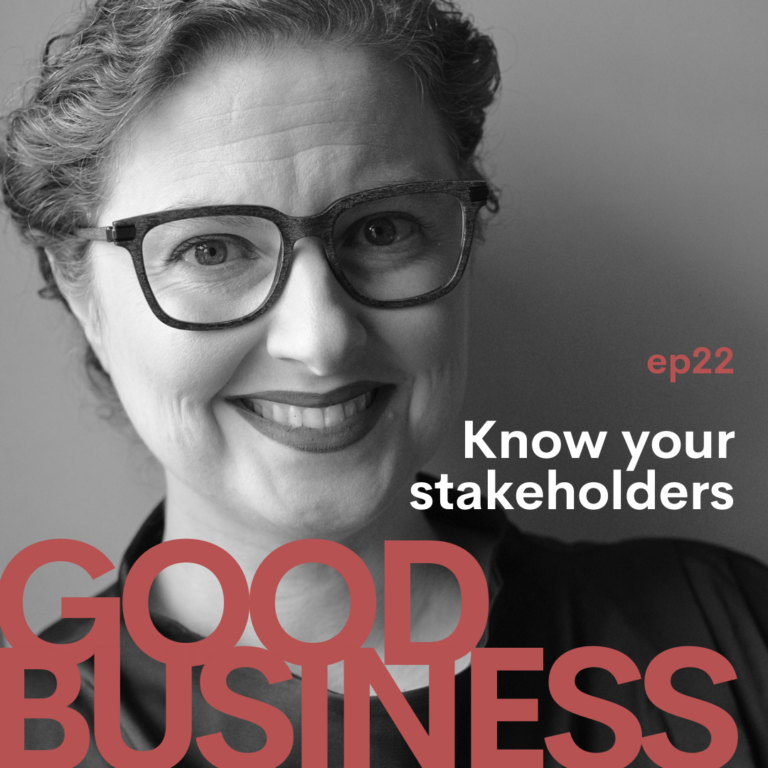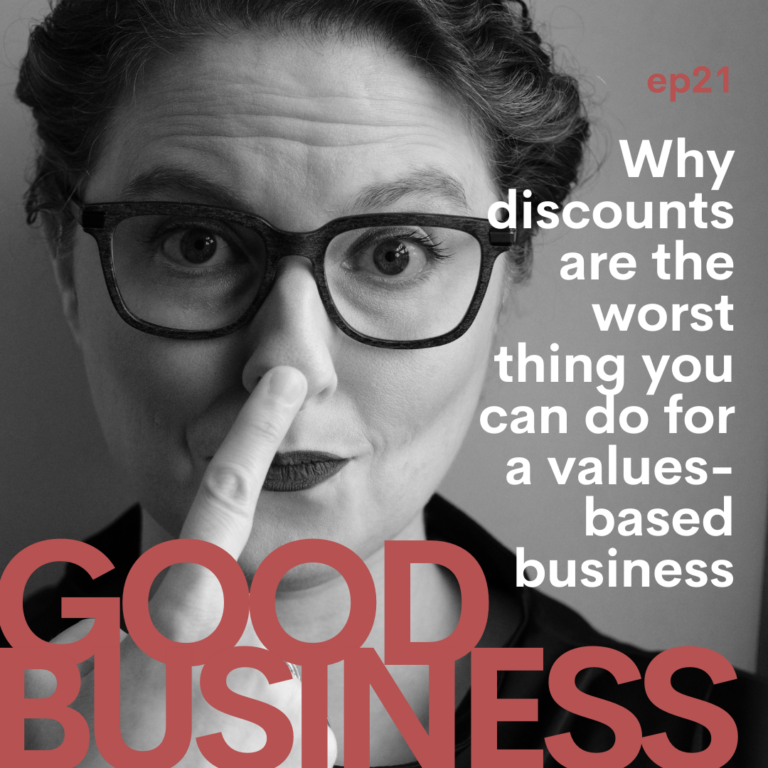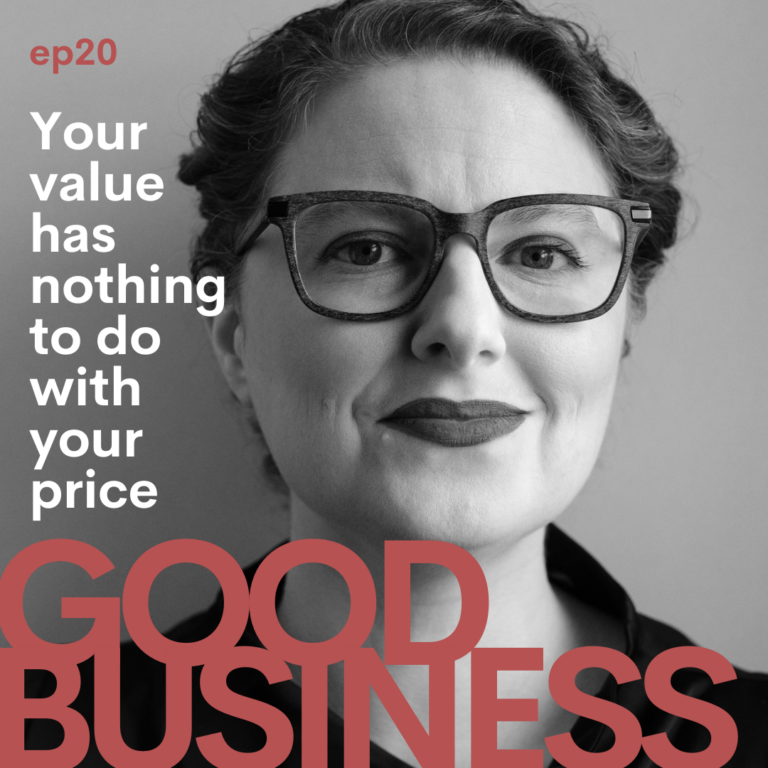In this episode of the Good Business Podcast, we dive into the critical 15 minutes that can make or break a client relationship. Want to know why these first few minutes are so crucial, what should be included, and how to adjust if any steps are missed? Through clear communication and setting mutual expectations, you can already begin building trust and cultivating a collaborative partnership with clients. By getting it right from the start, both parties can ensure a successful and fulfilling long-term relationship. Tune in to this episode to learn how to navigate the initial client interaction with finesse and set yourself up for success.
[NOTE: The transcript below was generated with the help of AI. I do not advocate for the use of AI in copywriting in general, but see it as a useful tool for improving efficient editing of my own creative content. None of the actual content of the episode or the transcript was AI-generated. I just let the computer help me clean up the text so it can be more easily understood and consumed. ~i.]
Welcome back to the Good Business Podcast! I’m your host, Illana Burk, and I’m so delighted to have you here with me today. Today, we’re talking about the 15 most important minutes of a client relationship. And I know you’re dying to know which 15 minutes we’re talking about, and I’m not going to hold you in suspense. We are talking about the first 15 minutes of your very first call or meeting with any new client.
Why are these 15 minutes so critical?
- It’s your very first opportunity to set the tone, set boundaries, and set mutual expectations.
- Getting it right means that your client’s anxieties are waylaid, which are usually higher than you might realize.
- You can set mutual expectations on both sides and build trust very quickly by showing them that you “have them.”
- Showing up and asking a client to set their expectations is different from showing up ready to create a clear partnership. A clear partnership is important for longer-term client relationships.
- Failing to set expectations up front leads to a transactional relationship, where the client is the customer and you are the purveyor. This can lead to problems down the road.
- Leading effectively right from the start validates their choice and is the first step towards keeping the promises you made.
How to make the most of the first 15 minutes:
- Keep your greetings brief.
- Take charge as quickly as possible.
- Tell them exactly how the call is going to go.
- Create an outline for yourself with bullet points including:
- What you know about the person
- Any pain points or concerns
- Red flags they might have mentioned
- Boundaries
- Policies
- Relevant pet peeves
- Common questions
- How to handle bumps in the road
- Boundaries: This is important to do with confidence and a steady voice. It sets the tone for the relationship.
- Policies: Briefly reiterate anything important from your contract.
- Relevant pet peeves: Share yours and ask about theirs. This can help you avoid pitfalls and meet their needs.
- Common questions: Address these to waylay final anxieties.
- Open the floor to how you’ll handle bumps in the road: Be clear about your process and expectations.
- Leave room for correction: Acknowledge that you might forget something and give yourself time to address it at the end.
The goal is to frame out the edges of your working relationship so the person is left with a clear sense of equity and trust. The most important thing to leave them with is that if anything goes wrong, you’ve got them and you’ll confront issues head-on.
I hope this helps you make the most of the first 15 minutes of your client relationships!
More Episodes
Start where you are. Use what you have. Do what you can. | GB 25
Today’s episode of The Good Business Podcast is all about my very favorite quote in the whole world. “Start where you are. Use what you have. Do what you can.” by Arthur Ashe
Why impact matters as much as marketing, sales, or strategy. Maybe more. | GB24
Today’s episode is less of a lesson than recent episodes. Instead, today we’re making a case for a topic we’ll be talking a LOT more about in the future: IMPACT. What it is. Why it matters. And how to pay attention to it.
Market visibility for people who care about other people | GB23
Today is a branch off of our stakeholder conversation. If you listened to that episode, you should have a clear picture of exactly who matters to you and your work and why, as well as how much time you have for your work without sacrificing what those VIPs need and expect from you. Next up, we talk about exposure, protection, and the responsibility you have to those who matter most.
Know Your Stakeholders | GB22
In this episode, I’m going to walk you through how to think about establishing your stakeholders, the steps you need to take to do so, and how to make decisions based on who they are without compromising those big fat dreams we’ve been talking about.
Pricing Basics: Why discounts are almost never a good idea | GB21
Today’s episode dovetails on our last one, where we talked all about how your value isn’t determined by your price tag. Today, we’re talking about discounts. First, we’ll talk about why businesses offer them, what their purpose is and when they ARE a good idea. Then we’ll talk about why they are probably a bad idea for you and what to do instead.
Pricing Basics: Your value is not attached to your price | GB20
This episode breaks down the popular trope that if you don’t charge a lot, people won’t value your work. First, we talk about the conditions that make this a common piece of advice. Then I lay out why this is complete crap for certain kinds of businesses. Finally, the episode wraps up with a brief primer on how to think about pricing in a way that serves your people AND your bigger dreams for yourself.

